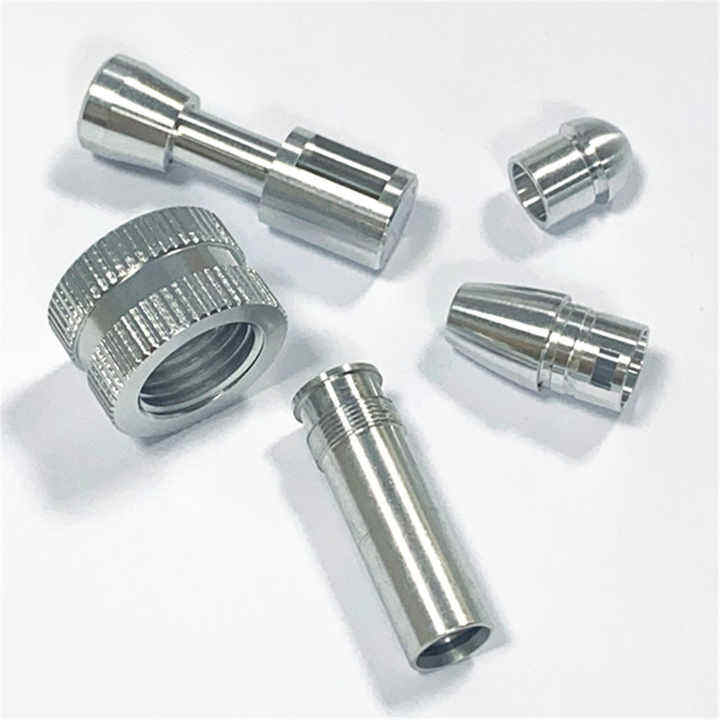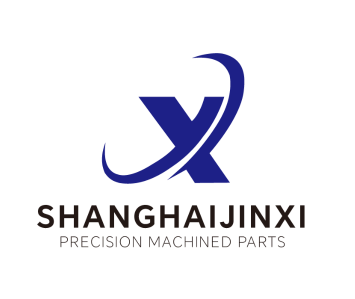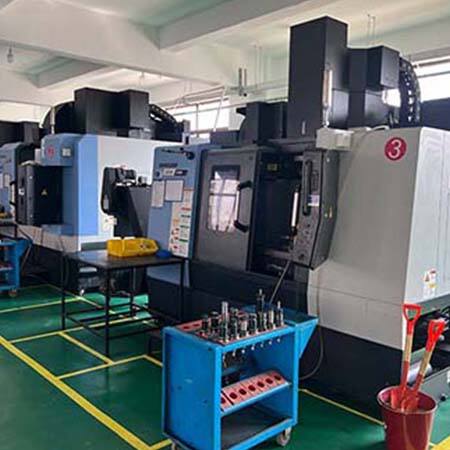Technical Capabilities in CNC Machining
Assessing Equipment and Technology Specifications
Today's CNC machining is heavily dependent on multiple types of equipment—vertical machining centers (VMCs), horizontal machining centers (HMCs), and multi-axis lathes—and corresponding rules about the optimum RPMs and feed rates that apply to these machines for different scales of work. State-of-the-art shops utilize high-speed spindles (20,000+ RPM), thermal stability systems, and advanced toolpath techniques to hold tolerances 0.025 mm) in production environments. Make sure the providers are using machines that are compliant with ISO 10791-1:2015, which standardizes test methods for positional accuracy and repeatability.
Part Complexity Handling Through 5-Axis Machining
5-axis CNC systems that reduce setup changes by 70% versus a 3-axis machine, single-setup machining of contours and undercuts with the ability to create compound angles. This feature is necessary for aerospace and medical components with complex geometries and positional tolerances less than 0.005 mm. And new progress was made possible due to the technology of simultaneous 5-axis interpolation, which enable real-time toolpath modifications, to reduce harmonic vibration that deteriorates surface finishes on thin-walled parts.
Production Scalability for Volume Needs
Premier shops middle the road between speed and accuracy by using modular workflows that can go from 50-unit prototype batches to runs of 10,000+ without retooling. A 2024 industry survey showed that manufacturers with robotic part-loading systems deliver high-volume orders on time 92% of the time. For price-sensitive projects, lights-out machining (production of parts unattended overnight or when the facility is under-off) can reduce per-unit costs by 18–34% and increases throughput which yields consistent quality across batches.
Material Expertise and CNC Machining
The choice between metal and plastic in CNC machining directly impacts part performance, cost, and manufacturing efficiency. A supplier's material expertise ensures optimal toolpath strategies, tolerances, and surface integrity—critical factors in industries ranging from aerospace to medical devices.
Evaluating Metal vs. Plastic Processing Skills
Metals such as aluminum (6061-T6) and titanium (Ti-6Al-4V) need high speed machining with carbide-based cutting tools to dissipate heat and withstand tensile strength (for example, titanium's strength of 900 MPa and melting point of 1,660 °C). On the other hand, thermoplastic polymers such as PEEK and PTFE require a slower spindle speed to avoid melting or tearing. Nylon, for instance, is a moisture-absorbing polymer necessitating pre-machining drying cycles to prevent dimension instability. Top CNC machine offerings automatically correct feeds and speeds with material-specific cutting programs that adjust to varying thermal conductivity and chip flow requirements.
Surface Finish and Post-Processing Options
Post-processing enhances functionality and aesthetics:
| Material | Common Finishes | Typical Ra (µm) |
|---|---|---|
| Aluminum | Anodizing, powder coating | 0.8–3.2 |
| Stainless | Electropolishing, passivation | 0.4–1.6 |
| PEEK | Bead blasting, chemical smoothing | 1.6–6.3 |
Metals often undergo stress-relief annealing to prevent warping, while plastics benefit from laser etching for part identification. For tight-tolerance components (e.g., ISO 2768-mK), micro-milling achieves Ra values below 0.4 µm. Secondary processes like ultrasonic cleaning ensure contaminant-free surfaces for sealing or bonding applications.
Quality Control Standards for CNC Machining
ISO 9001:2015 Certification Requirements
ISO 9001:2015 certification is a statement to our customers that our supplier operates a quality management system and quality is a way of life; the ISO 9001:2015 standard is based on several quality management principles, including a strong customer focus, the motivation and implication of top management, the process approach and continual improvement. Certified plants experience 15% less production defects than non-certified plants. The quality standard demands documented procedures for corrective action, supplier audits and employees' training. This certification is particularly important to aerospace and medical device manufacturers because it demonstrates that strict traceability records and methods to mitigate risk are followed.
First Article Inspection Implementation
First Article Inspection (FAI) verifies that prototype parts meet all of the design file specifications before full production is started. This process requires the CMMs and surface roughness testers to measure dimension by dimension. Organizations that employ structured FAI procedures report first pass yield (FPY) rates as much as 20 percent higher on complex jobs. Key sectors such as automotive and defence need FAI documentation to ensure that geometric accuracy, material properties, and functional performance conform to technical drawings.
GD&T Compliance Verification Methods
GD&T (geometric dimensioning and tolerancing) enables machining to be held to print to standardized symbols for flatness, concentricity, and profile tolerances so machined parts can be verified they will function mechanical wise. Modern CMMs equipped with 3D scanning measure positional tolerances to within ±0.005 mm, whereas optical comparators verify surface finish measurements such as Ra 0.8 µm Even so, more simply explains datums and feature control frames to help prevent casual operators from making mistakes known as the GIGO principle (garbage in, garbage out).89% of quality-related CNC machining errors are due to misunderstanding GD&T callouts Automated inspection software ensures the verification of datums and feature control frames.
Cost Analysis of CNC Machining Services
Breaking Down Tooling and Material Costs
CNC machining costs stem from three primary factors: material selection, machine operation time, and specialized tooling requirements. Aerospace-grade aluminum typically costs $25–$40 per kilogram, while stainless steel ranges $30–$50/kg due to increased machining difficulty. Tooling expenses account for 15–20% of total project costs for complex geometries requiring custom fixtures.
Machine time remains the dominant cost driver at $75–$120/hour for 3-axis systems, with 5-axis machining adding 30–40% premium. Post-processing treatments like anodizing add $0.50–$2.50 per part depending on batch size.

Value Optimization Through Prototyping Discounts
Strategic prototyping reduces per-unit costs by 18–35% through iterative design refinement before full production. Many machine shops offer 10–15% discount structures for prototype orders exceeding 50 units, with some providing modified tooling costs for subsequent production runs.
Batch production scaling from 100 to 1,000 units typically decreases per-part costs by 40–60% due to optimized machine programming and material purchasing. Early-stage prototyping helps identify potential manufacturing issues, preventing costly design revisions during high-volume production phases.
Project Management in CNC Machining Partnerships
Lead Time Coordination Strategies
Lead time synchronization is what separates good CNC machining partnerships from bad ones. Industry-leading suppliers analyze raw material availability, machine capacity, and logistics and develop production schedules with added safety cushions (usually 10-15 percent) for complex components. Including dashboards integrated with an ERP, providing customers with the opportunity to track in real-time to the schedule, and pointing out the discrepancies between the planned and actual timeline. A 2023 survey discovered digital coordination tools led manufacturers to have 92% on-time delivery rates compared with 67% for manual tracking. Favor partners who clearly communicate changes in schedule due to wear of tooling or material defects.
Engineering Change Order Handling
Strong ECO processes ensure minimal lost time for CNC partnerships. Productive workflows instantly evaluate new designs for their effect on tool paths, cycle times and GD&T. Design providers who are providing DFM feedback at the time of ECO review are able to reduce revision costs by 30% through material optimization. Cross-functional teams update CAM programs, inspection processes, and other documentation concurrently to avoid version control mistakes. Automatic ECO routing in PLM Software reduces ECO and ECR implementation time by 40% versus email based systems, while keeping an audit-ready revision history.
Industry Certifications for CNC Machining Providers
AS9100 for Aerospace Components
An AS9100 certification demonstrates that a machining supplier meets aerospace industry standards for defect prevention and supply chain oversight. This standard requires documented actions in risk analysis, tracking of deviation, and implementation of corrective action at all stages of production. AS9100 certified suppliers are expected to produce ≤0.25% scrap rates and the real-time control of cutting conditions such as tool wear and surface roughness. NADCAP-approved inspection techniques used to service those in the aviation field include eddy current inspection to determine subsurface flaws in aluminium alloys.
ITAR Compliance for Defense Contracts
CNC Subcontractors with defense work need to be "ITAR" (International Traffic in Arms Regulations) approved to receive export controlled technical data and hardware. ITAR machine shops utilize physical security control, such as access control, biometric support and digital file logging for military specification reviews. Background checks are required for all defense contracting employees and foreign nationals are barred from receiving classified information on the project. Keep encrypted backups of quality documentation for 10+ years to meet Defense Contract Management Agency (DCMA) audit requirements also.
FAQs on CNC Machining
What types of CNC machines are commonly used?
Common CNC machines include vertical machining centers (VMCs), horizontal machining centers (HMCs), and multi-axis lathes. These machines are used based on the scales of work and specific needs.
How does 5-axis machining benefit production?
5-axis machining reduces setup changes significantly and enables machining of complex surfaces and geometries in a single setup. It's essential for aerospace and medical components requiring high precision.
Why is material expertise important in CNC machining?
Material expertise is crucial because the choice between metal and plastic affects part performance, cost, and manufacturing efficiency. Proper material handling ensures optimal toolpath strategies and surface integrity.
What is ISO 9001:2015 certification?
ISO 9001:2015 certification indicates that a supplier follows quality management principles, including strong customer focus and continual improvement, helping reduce production defects and ensuring compliance.
What are the cost drivers in CNC machining?
Primary cost drivers in CNC machining include material selection, machine operation time, and tooling requirements. Machine time and post-processing treatments are particularly impactful on total project costs.

